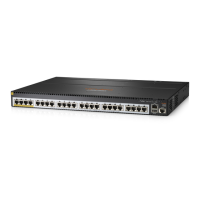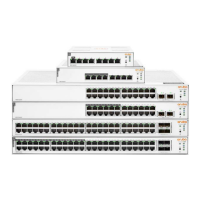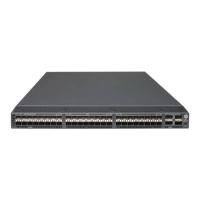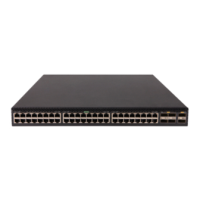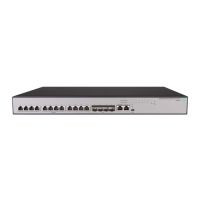Dynamic OSPF activation and configuration
OSPF automatically activates when enabled with router ospf. All configuration commands affecting OSPF
(except reconfiguring the router ID) are dynamically implemented and can be used without restarting OSPF
routing.
NOTE: OSPF is automatically enabled without a system reset.
General configuration steps for OSPF
To begin using OSPF on the routing switch:
Procedure
1. In the global config context, use ip routing to enable routing (page Enabling IP routing on page 197.)
2. Execute router ospf to place the routing switch in the ospf context and to enable OSPF routing (page
A-21.)
3. Change theOSPF RFC 1583 compliance, if needed. (See
Changing the RFC 1583 OSPF compliance
setting on page 198.)
4. Use area to assign the areas to which the routing switch will be attached (page A-25.)
5. Assign interfaces to the configured areas per-VLAN or per-subnet by moving to each VLAN context and
using one of the following commands:
a. ip ospf area ospf-area-id
assigns all interfaces in the VLAN to the same area. Use this option when there is only one IP address
configured on the VLAN or you want all subnets in the VLAN to belong to the same OSPF area.
b. ip ospf ip-address area ospf-area-id
assigns an individual subnet to the specified area.
6. Optional: Assign loopback interfaces to OSPF areas by using the ip ospf area command at the loopback
interface configuration level. (See
Assigning loopback addresses to an area on page 203.)
7. Optional: On each routing switch used as an ASBR in your OSPF domain, configure redistribution to enable
importing the routes you want to make available in the domain.
a. On an ASBR in a backbone, normal, or NSSA area where you want to import external routes, configure
redistribution filters to define the external routes you do not want imported.
b. Enable redistribution.
See Configuring external route redistribution in an OSPF domain (optional) on page 205.
8. Optional: Configure ranges on ABRs to reduce inter-area route advertising.
9. Optional: Use administrative distance to influence route choices.
10. Optional: Change OSPF trap generation.
11. Optional: Reconfigure default parameters in the interface context, if needed. Includes cost, dead-
interval, hello-interval, priority, and others.
Chapter 11 Open Shortest Path First Protocol (OSPF) 257

